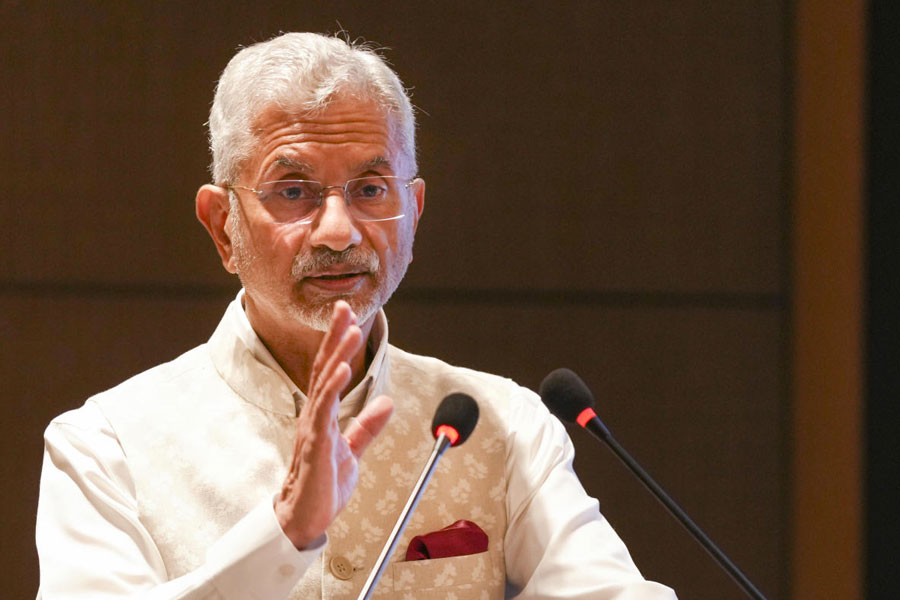 |
| Dr Sumantra Chattarji |
Why do we forget all that we cram for exams in a few weeks but remember one small experience, pleasant or unpleasant, for a lifetime? Why do we not remember the telephone numbers and names of people as effortlessly as we would perhaps remember our first date?
This is the fundamental question with which Dr Sumantra Chattarji at the National Center for Biological Sciences (NCBS) started out more than five years ago when he moved from the Massachusetts Institute of Technology in the US to NCBS in Bangalore. And he has come a long way since then, unravelling fascinating details of the brain on how stress, depression and anxiety play upon each other at the cellular level, affecting memory.
For a long time, scientists studying the biological basis of memory have focused on the synapse, the junction where information is passed from one brain cell (neuron) to another. They have established that it’s the amazing ability of synapses to change in response to experience, also called ‘synaptic plasticity’, that is responsible for long-term storage of information in the brain.
 |
Clearly, enhanced synaptic plasticity till recently augured well for memory and the general health of the brain. But then arrived Dr Chattarji and his team of researchers with their five years of work on amygdala, the chief emotion centre in the brain, to show that increased synapses in the amygdala also mean increased anxiety. In a paper published in the American Proceedings of National Academy of Sciences, Dr Chattarji pins this down to a naturally occurring molecule in the brain, called brain-derived neurotrophic factor (BDNF), which is responsible for physical changes in the brain and the ensuing ups and downs in depression and anxiety.
Hippocampus, which is associated with factual memory, actually shrinks during major depression and other chronic stress-related disorders. On the other hand, amygdala, which is associated with emotion, sees an increased activity in the form of new connections, that is, more synapses.
“I was interested in studying these two black boxes (hippocampus and amygdala) whose differences are not only amplified by stress but which also regulate stress in different ways,” says Dr Chattarji.
Researchers used transgenic (genetically engineered) mice from MIT Nobel laureate Susumu Tonegawa’s lab to over express BDNF in the mice brain. In other words, these mice had their brain loaded with BDNF. When exposed to stress, their hippocampus did not show neuronal damage, proving that BDNF had actually acted as an antidepressant. In contrast, the mice showed increased anxiety as well as increased connection between neurons in the amygdala.
That the amygdala during stress presents the opposite picture (where the growth of neurons is in fact a bad thing), probably also presents the “underpinnings of anxiety, trauma and fear,” says Dr Robert M. Sapolsky, neuroscientist and stress expert at Stanford University in California. “And here, BDNF is doing the same old thing on a cellular level but now being one of the villains. So it’s fascinating how the same cell biology can mean absolutely opposite things in different parts of the brain,” Dr Sapolsky told KnowHow.
A physicist from the Indian Institute of Technology, Kanpur, Dr Chattarji was a rank outsider when he decided to study biology and landed at the biophysics department at Johns Hopkins University in the US. And perhaps his being a physicist helped him pose questions that even veterans in the field of neurobiology and stress had either ignored or overlooked. “I owe this to my late father, a physics professor at Vishwabharti University in Shantiniketan, who very early in my career advised me to apply the training of physics to biology,” he says emotionally.
The advice indeed paid off and Dr Chattarji’s group was the first to precisely measure and quantify how and where new connections happen in the amygdala. “We mapped the whole region and could pin point that it was the pyramidal and stellate neurons that grew during stress and caused anxiety,” he adds.
Moving from Johns Hopkins to the Salk Institute in San Diego, where he spent his later doctoral years, also meant a shift from being a novice learner to a keen enthusiast who could question the established tenets. At Salk, he says, all the learning he had was at the famous 3.30 pm ‘tea’ which Nobel laureate Francis Crick had made mandatory for all. “In those informal talks I found how a thinker like Dr Crick could push the boundaries of biology” he reminisces.
Probably it’s the same training he is applying to stress biology — pushing the frontiers where even hardcore hippocampus champions like Robert M. Sapolsky, Susumu Tonegawa and Bruce McEwen have begun to realise the importance of amygdala in stress-related disorders and are collaborating with Dr Chattarji. No mean achievement for a Shantiniketan man who thinks it was his schooling at Pathabhavan which first taught him to value the “democracy of subjects”. The subsequent destinations were no less noteworthy — post doctorate at Yale and then a two-year stint at MIT after which he decided to return to Bangalore in 2000.
Having shown that amygdala gets rewired during stress disorders which causes deleterious side effects like anxiety in many patients, Dr Chattarji is now pushing the concept to examine if this rewiring can be reversed and synapses brought down after stress therapy. “It’s a critical question and we are turning everything on its head,” he says.
Probably it’s worth being heretical. His research findings indeed provide a new model to test a new generation of drugs, because it’s now possible to study their impact both on the hippocampus and amygdala. This has got both the scientific community and the pharamaceutical industry cautiously excited.
“This research points to certain therapeutic interventions down the line, potentially trying to block the actions of BDNF in the amygdala after trauma. But this is obviously speculative,” says Dr Sapolsky.
But Dr Chattarji has already begun studying existing drugs, including the blockbuster antidepressant Prozac and other products from drug companies like Novartis and Servier. “We are looking at both existing and new drugs to find out how they impact the amygdala at the cellular level,” he adds.
His lab has extensive collaboration with Servier, the French pharmaceutical company which has an Indian counterpart, Serdia Pharmaceutcials in Mumbai. The company is very enthusiastic about their collaboration and the clinical implications of his findings. Serdia believes the neurobiological findings from Dr Chattarji’s lab do provide new avenues for the treatment of depressive disorders and certainly make the amygdala a major target for the treatment of these disorders.
Not anticipating his research to be close to humans so soon and offer immense possibilities, he says he feels like a “kid in a candy store.” Several other brain-related disorders can now be looked at from a so-far-unexplored perspective — Alzheimer’s disease, autism, Fragile X Syndrome (the most common cause of inherited mental impairment) and others. “I am also trying to get some practicing psychiatrists on board in India,” he says, explaining how poor the awareness about conditions like Fragile X is. His own lab experiments are set for Version 2.0 where static data would give way to dynamic information collected in real time, both from amygdala and hippocampus.










